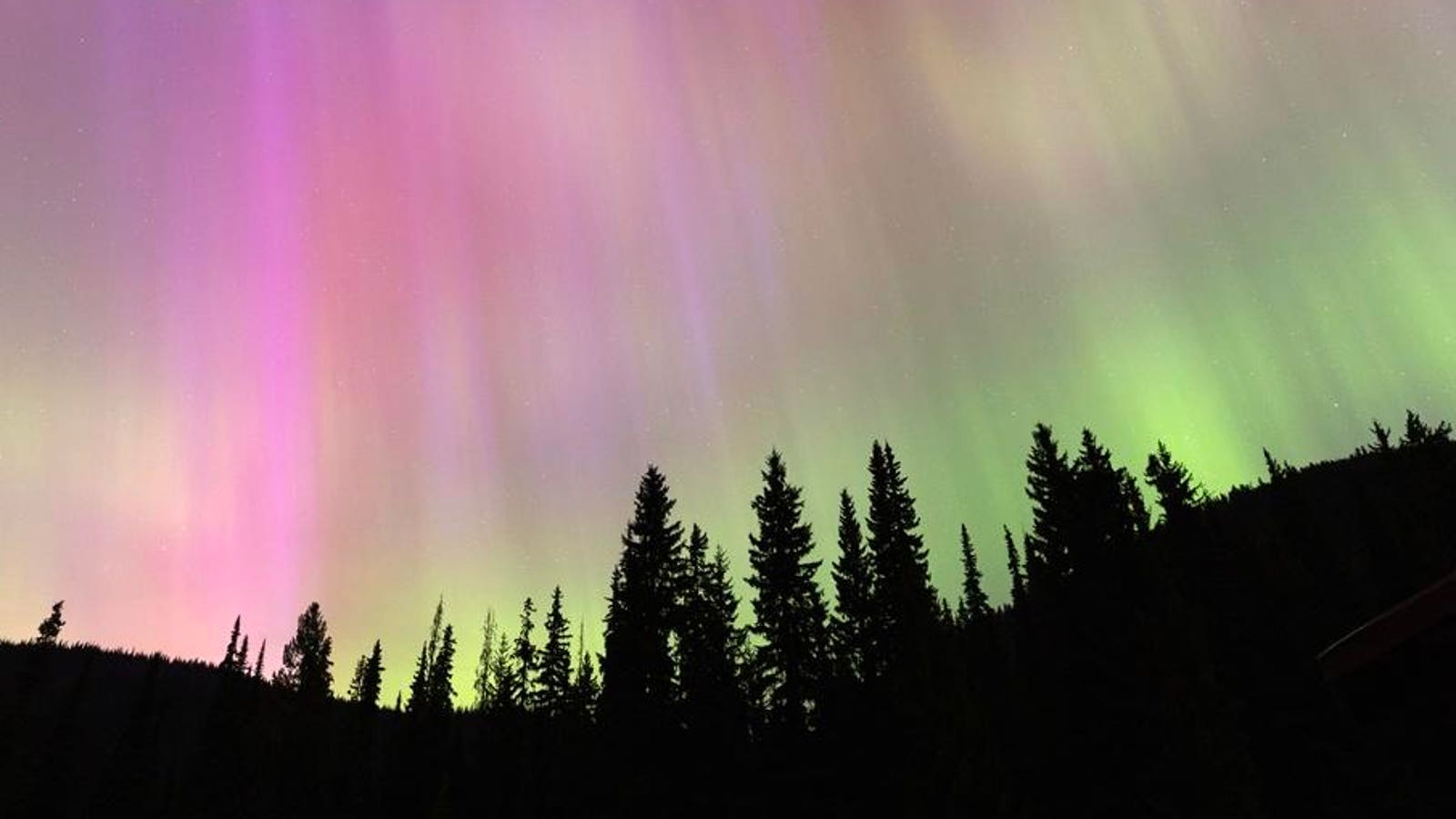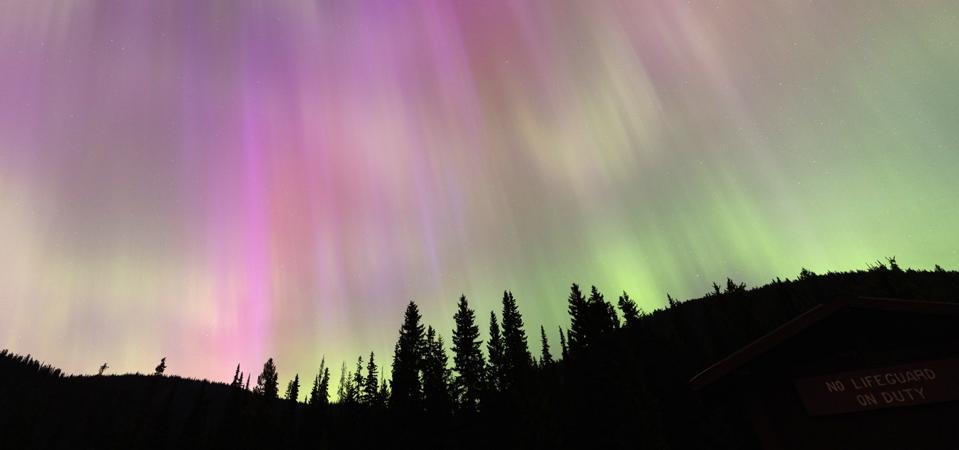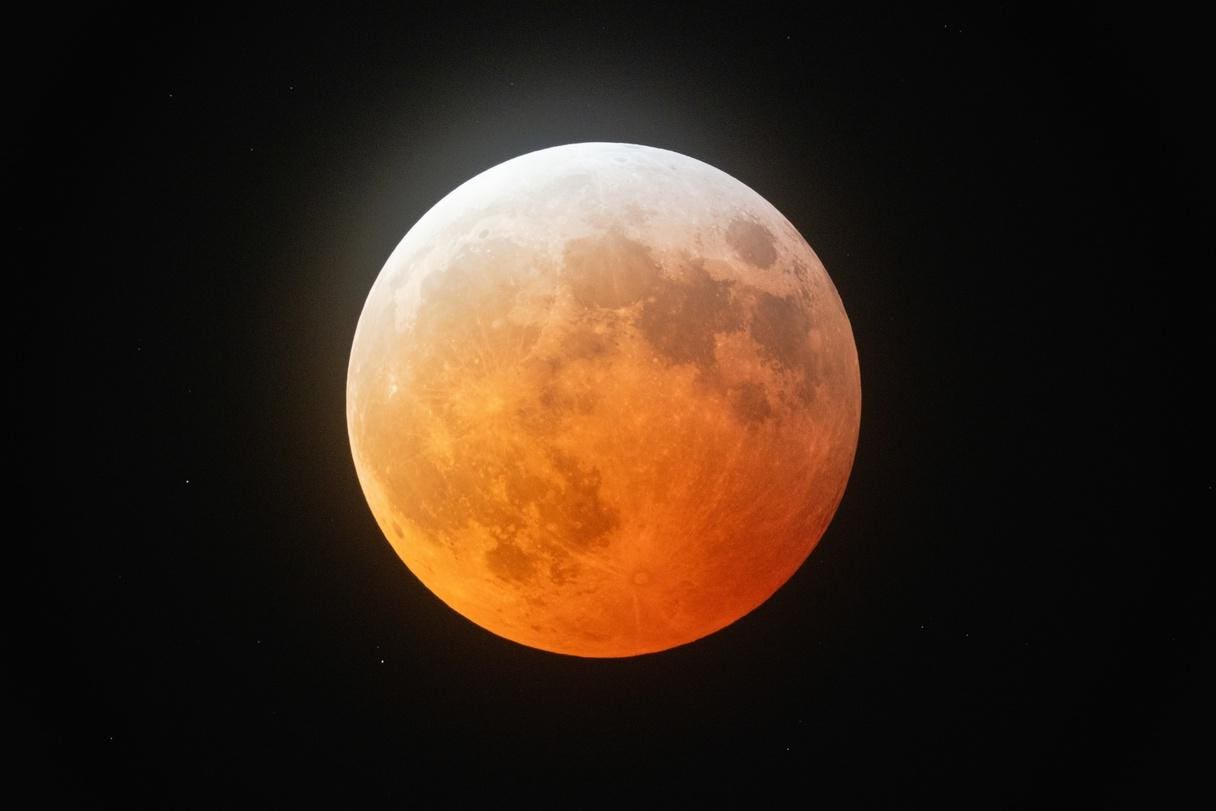The aurora borealis, commonly known as the northern lights, is seen on May 11, 2024 in Manning Park, … More
The Northern Lights may be visible in the U.S. this week, according to the National Oceanic and Atmospheric Administration’s Space Weather Prediction Center, which is predicting a geomagnetic storm that could result in aurora being glimpsed in as many as 10 U.S. states overnight on Tuesday, June 24 through Wednesday, June 25.
The agency’s three-day forecast has a minor geomagnetic storm occurring, measured at a value of G1 on a scale of G1 to G5. According to NOAA’s forecast, the Kp index — which provides a rough guide to the intensity of aurora displays — may reach 4.67.
Where The Northern Lights May Be Visible
NOAA’s aurora viewlines have potential aurora displays that are possible in northern U.S. states and Canada. A total of 10 U.S. states have a chance of seeing the aurora on the northern horizon on on Tuesday, June 24 through Wednesday, June 25, with those on the U.S.-Canada border having a higher chance.
Parts of U.S. states that could potentially see aurora include Washington, northern Idaho, Montana, Wyoming, North Dakota, South Dakota, Minnesota, Wisconsin, Michigan and Maine. Areas far from light pollution are likely to get the best views.
NOAA’s aurora viewline forecast for Tuesday, June 24, 2025.
When To See The Northern Lights
Exactly when and where aurora becomes visible this week will be down not to predictions but data coming in from NASA’s DSCOVR and ACE satellites. Orbiting the sun from around a million miles from Earth, they give a roughly 30-minute warning of aurora displays after measuring the solar wind’s speed and magnetic intensity. Check NOAA’s 30-minute forecast or use the Glendale App for up-to-the-minute forecasts.
What Causes The Northern Lights
The Northern Lights are caused by the solar wind, a stream of charged particles from the sun interacting with Earth’s magnetic field. Although the magnetic field deflects much of it, some charged particles accelerate along the magnetic field lines toward the polar regions, where they collide with oxygen and nitrogen atoms, exciting them and causing them to release energy as light.
The possibility of displays of the aurora borealis at more southerly latitudes comes from a spike in solar activity, which is currently at a 23-year high due to the current solar maximum period. Geomagnetic storms and aurora are expected to continue through 2025 and 2026.
Wishing you clear skies and wide eyes.









